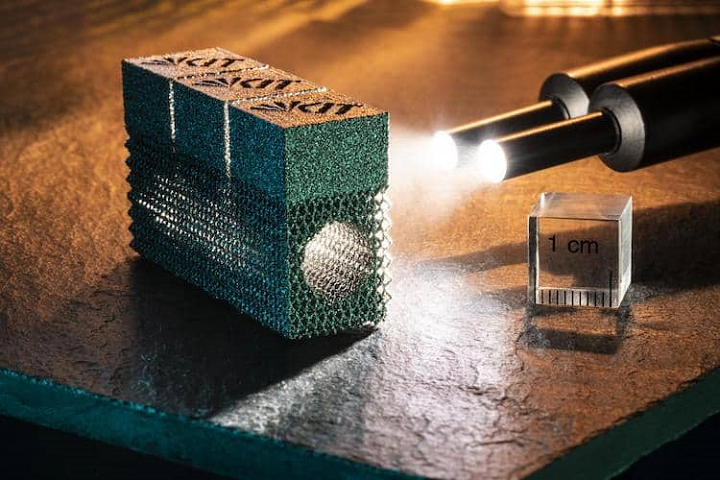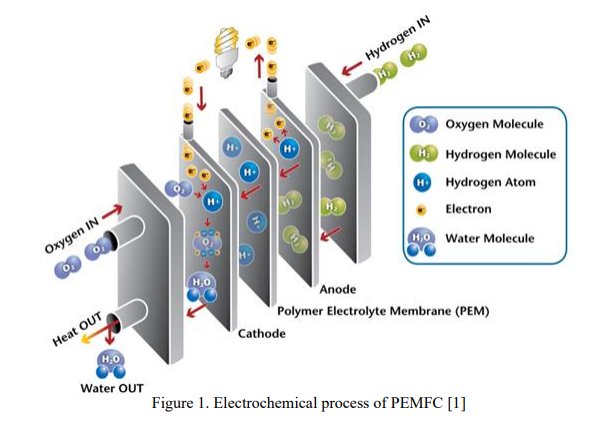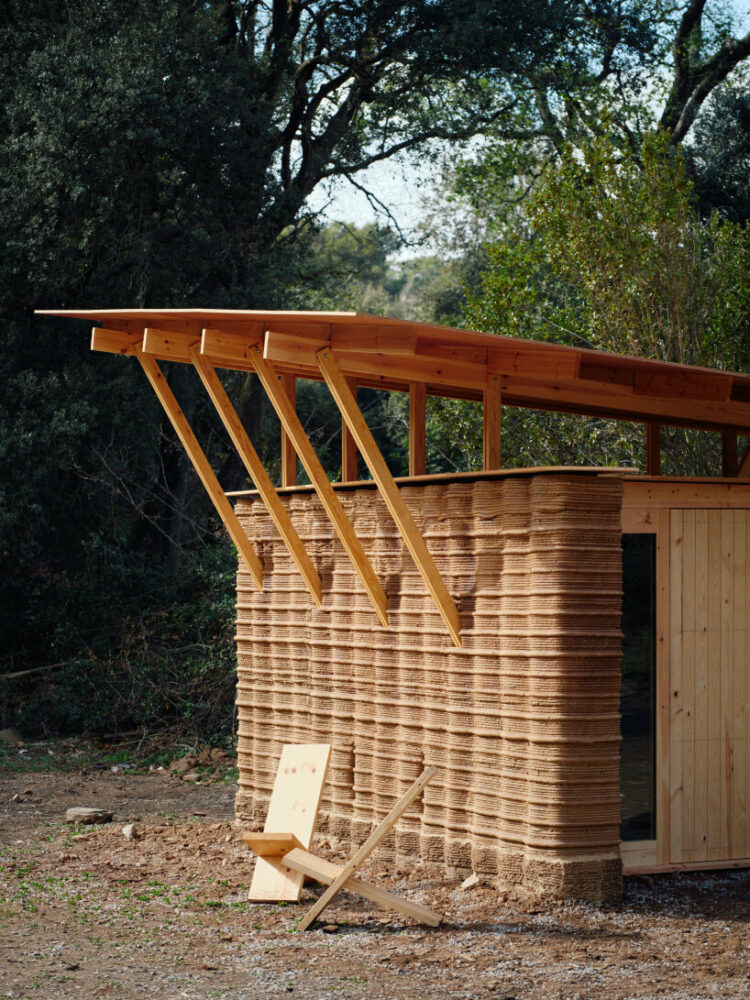In today’s 3D Printing News Briefs, we’ll start with software, as Siemens embeds the 3Dfindit.com parts library by CADENAS into its Capital software. Onto metal news now, as research out of the University of Texas at El Paso resulted in a method for printing Filamet titanium to create fuel cell components, and a new method for 3D printing tungsten was developed. Researchers at Tsinghua University developed a laser-based method to 3D print objects using semiconductor quantum dots. The UK is celebrating a water industry first with 3D printed concrete components. Finally, WASP and the IAAC in Spain used some interesting materials to 3D print a building.
Siemens Embeds 3Dfindit.com by CADENAS into Capital Software
Siemens Digital Industries Software has embedded the 3Dfindit.com visual search engine powered by CADENAS into its Capital software for quick sourcing of manufacturer-verified CAD components for electrical/electronic (E/E) design. Because there are an increasing number electrical and electronic components used to develop aerospace and automotive systems these days, testing and procurement can be difficult. Previously, users of Siemens’ Capital software had to manually create library parts and symbols by going to various part manufacturer or distributor websites to get the necessary electrical data. But now that 3Dfindit.com has been integrated, manufacturer component data with intelligent part information has been consolidated under one structure, and users can easily find and import new parts into Capital software and add them to designs with just one click.
“In order to drive the advanced automation delivered by the Siemens E/E systems development portfolio of tools including Capital software and, Solid Edge® software even further, high quality electrical part data is needed. That’s why Siemens teamed up with CADENAS, an expert for intelligent CAD catalogs and Digital Twins. By adding 3Dfindit.com to Capital software, users save valuable time by reducing administrative and search overhead, which they can use to develop creative products and accelerate time to market,” said Glenn Reynholds, the Senior Product Marketing Manager at Siemens Digital Industries Software.
UTEP Researcher Focuses on Filamet for Printing Fuel Cell Components
The Virtual Foundry is an open platform that makes a variety of bound metal filaments for global customers. Its Filamet materials have also been catching the eyes of research students, like David Alexander, who’s in the Doctoral Program for Aerospace and Mechanical Engineering at the University of Texas at El Paso (UTEP). As Bradley Woods, the founder and CEO of The Virtual Foundry, explained in an email, this recently published paper, “Suitability of Low-Cost Additive Manufacturing for Polymer Electrolyte Fuel Cells,” is the “17th thesis, dissertation or general paper published about our products” and “draws a solid, positive conclusion about the efficacy of our technology as applied to 3d printed Titanium.” In the paper, Alexander explains his method for 3D printing fuel cell components using low-cost equipment and commercial materials, i.e. titanium Filamet.
“The significance of this study is the reduction of bipolar plate design costs experienced in the development stages prior to mass production and unveil new approaches to creating bipolar plate systems with composite materials. Rapid manufacturing is the implementable approach to exploit this cost related issue because of its low cost at low volumes relationship to production. Considering the evolution of bipolar plate designs over the years, the success of this study is an asset to the iterative nature of optimizing bipolar plate designs, materials, and systems for polymer electrolyte fuel cells,” Alexander wrote in the abstract.
KIT Researchers 3D Print Tungsten with Commercial 3D Printer

Tungsten component produced by 3D printing using electron beam melting. Photo: Markus Breig, KIT.
Researchers from the Karlsruhe Institute of Technology (KIT) announced that they successfully used a commercial 3D printer to fabricate tungsten (wolfram) as part of a DFG project. Tungsten has a very high corrosion resistance, which makes it good for applications in chemical plants, and its 3,400 °C melting point means it’s great for jet engine turbine blades. Unfortunately, it’s very difficult to machine this material because of this high melting point, as well as its hardness. The KIT team mixed a binding agent with powdered tungsten to form the filament, and the binding system was removed after the print process in order to get, as Dorit Nötzel from KIT’s Institute of Applied Materials (IAM) said, “a tungsten component that is as pure as possible.” The prints are heated to over 2,000°C in a thermal post-process, which causes the individual grains of tungsten powder to merge and form a single component, and in the final step, the tungsten grid structure is sintered.
Steffen Antusch, from the IAM, said, “By using 3D printing technology, we are now able to produce tungsten components that are used, for instance in fusion technology within the HGF Fusion Programme or in medical technology, faster and easier.”
Quantum Dot Matrix Printer Turned into 3D Printer

The 3D quantum dot printing technique caps the dots with mercaptopropionic acid ligands to connect adjacent structures.
A Tsinghua University team of researchers developed a laser-based 3D printing method for fabricating 3D objects with semiconductor quantum dots. As they explain in their paper, many hope that by incorporating inorganic materials into 3D printing ink, more functional products with advanced electronic and optical properties can be made, but the organic compounds present can reduce thermal stability and electronic conductivity. The Beijing team’s technique, which could be used to print advanced light-emitting devices or photodetectors, uses quantum dots, which are actually nanocrystals with a cadmium selenide core and a zinc sulfide shell, capped by 3-mercaptopropionic acid ligands. The surface chemistry of a single nanocrystal changes when two photons are absorbed within a small volume by the nanocrystal, which then leads to bonds forming between the quantum dots. This enabled the researchers to 3D print light-emitting nanoscale designs.
“Three-dimensional (3D) laser nanoprinting allows maskless manufacturing of diverse nanostructures with nanoscale resolution. However, 3D manufacturing of inorganic nanostructures typically requires nanomaterial-polymer composites and is limited by a photopolymerization mechanism, resulting in a reduction of material purity and degradation of intrinsic properties. We developed a polymerization-independent, laser direct writing technique called photoexcitation-induced chemical bonding. Without any additives, the holes excited inside semiconductor quantum dots are transferred to the nanocrystal surface and improve their chemical reactivity, leading to interparticle chemical bonding. As a proof of concept, we printed arbitrary 3D quantum dot architectures at a resolution beyond the diffraction limit. Our strategy will enable the manufacturing of free-form quantum dot optoelectronic devices such as light-emitting devices or photodetectors,” the abstract states.
ChangeMaker3D & United Utilities 3D Print Concrete Wastewater Chamber
United Utilities, which provides water and wastewater services for 7 million people in North West England, worked with ChangeMaker3D to achieve a first in the UK water industry—they designed, 3D printed, and installed a 1.8m cylindrical concrete wastewater chamber with a new technology called Printfrastructure, which comes with major cost, carbon, and labor savings. At the beginning of last year, ChangeMaker3D was selected for United Utilities’ Innovation Lab, which incubates new ideas and brings them to market, and together they identified that a wastewater distribution chamber would be the best component to design and demonstrate. After creating an accurate digital model of the chamber, CyBe Construction printed it offsite with its robotic arm technology. The chamber was recently installed at one of the utility company’s test facilities in Cheshire, and now that testing is complete, the team is reporting a 25% reduction in carbon, 20% in cost savings, and 55% reduction in labor. Additionally, the technology was able to print the chamber in less than four hours, with a major reduction in materials as well.
“After months of hard work, we are thrilled to see the water chamber in situ, with proven environmental and cost benefits. It’s the result of a brilliant collaboration with United Utilities and our team of delivery partners, including CyBe Construction, Costain, Constructure, Ainscough Crane Hire and AutoMutatio. Thanks to them, we have achieved several UK ‘firsts’ – including the design, print and installation of a 3D concrete printed component for this sector, and the UK’s first crane lift of a 3D printed structure,” said Natalie Wadley, Co-Founder and CEO of ChangeMaker3D.
“Our mission is to support industry to leave a lighter footprint, and transforming the UK’s infrastructure is critical if the UK is to reach ‘Net Zero’. We believe 3D printed concrete has the potential to help deliver the green growth our country needs. Our aim now is to continue to work with United Utilities to grow the impact. We want to prove this is a technology that can have widespread uses not just in the water sector, but for rail and highways, too.”
IAAC & WASP 3D Print Zero-Waste Prototype Building in Spain
Finally, the Institute for Advanced Architecture of Catalonia (IAAC) used a large-scale 3D printing system by WASP to construct a zero-waste prototype building in Spain using aloe, earth, egg whites, and enzymes. The building, called TOVA, was printed at the Valldaura Labs facilities outside Barcelona to show what homes of the future could look like, as the IAAC is working to find solutions to climate, environmental, and social challenges that design and architecture industries face. The team was inspired by the Mediterranean climate in the design, and while the compact volume of the building, which features walls with a network of cavities for insulation and airflow, shelters it from winter cold, it can also be expanded for warmer seasons. The institute says that the building, which also has a waterproof coating, generated zero waste, as all the materials they used came from within a 50 meter radius of the construction location.
“3D printing or additive manufacturing is a great example of km zero construction, as the construction work can be done 100% with local materials and labor,” the IAAC wrote. “In addition, the printing system allows highly customizable houses for different use cases; such as communities of homes and services that can be rapidly created using this technology anywhere.”
Subscribe to Our Email Newsletter
Stay up-to-date on all the latest news from the 3D printing industry and receive information and offers from third party vendors.
You May Also Like
Gorilla Sports GE’s First 3D Printed Titanium Cast
How do you help a gorilla with a broken arm? Sounds like the start of a bad joke a zookeeper might tell, but it’s an actual dilemma recently faced by...
Nylon 3D Printed Parts Made More Functional with Coatings & Colors
Parts 3D printed from polyamide (PA, Nylon) 12 using powder bed fusion (PBF) are a mainstay in the additive manufacturing (AM) industry. While post-finishing processes have improved the porosity of...
$25M to Back Sintavia’s Largest Expansion of Metal 3D Printing Capacity Since 2019
Sintavia, the digital manufacturing company specializing in mission-critical parts for strategic sectors, announced a $25 million investment to increase its production capacity, the largest expansion to its operations since 2019....
Velo3D Initiates Public Offering in a Bid to Strengthen Financial Foundations and Drive Future Growth
Velo3D (NYSE: VLD) has been among a number of publicly traded 3D printing firms that have attempted to weather the current macroeconomic climate. After posting a challenging financial report for 2023,...



































